| Ponnier M.1 | |
|---|---|
| Role | Single seat fighter |
| National origin | France |
| Manufacturer | Avions Ponnier |
| Designer | Emile Eugène Dupont |
| First flight | 1915 |
| Introduction | 1916 |
| Retired | November 1916 |
| Number built | c.20 |
The Ponnier M.1 was an early French World War I fighter aircraft Most of those produced were operated by the Aviation Militaire Belge. They were deemed unusable by the Belgian ace Willy Coppens and rapidly retired.
Avions Ponnier had attempted to win a pre-World War I contract from the French military with their 1913 Ponnier L.1 scout, designed by Alfred Pagny, but were not successful. [1] [2] After the start of the war, they returned with a new design, clearly informed by their experience with the L.1. [3] This aircraft, the M.1, was supposedly designed by Emile Dupont despite its similarities with the L.1; Dupont was later employed by the reformed Hanriot concern to design the 1916 Hanriot HD.1 fighter. [4]
The Ponnier M.1 was a single bay biplane with a pair of parallel interplane struts on each side, braced with pairs of flying and landing wires. There was mild stagger but no sweep or dihedral. In plan the wings were almost rectangular; the lower plane was smaller both in span and chord. Low aspect ratio ailerons were mounted on the upper planes only. [4]
The M.1 was powered by an 80 hp (60 kW) le Rhône 9C nine cylinder rotary engine, fitted with a two blade propeller and an unusually large domed spinner, nearly identical in appearance to the casserôle found on the Morane-Saulnier Type N, which left only a small gap for cooling air between it and the almost complete cylindrical engine enclosure. Behind the engine the fuselage was flat sided, with a curved upper decking. The open single cockpit was at the wing trailing edge, and there were cut-outs in both planes to improve the pilot's view. The fuselage tapered aft where the horizontal tail was mounted on top of the fuselage; the original tail surfaces were very small and without a fixed fin. Later versions had an enlarged straight edged tailplane and split pair of angle tipped elevators, a wide chord fin and enlarged rudder. The M.1 had a fixed conventional undercarriage, with mainwheels on a single axle mounted on a pair of V-struts from the lower fuselage longerons and wire cross braced. The only armament was a single Lewis gun, mounted well above the upper wing surface. [4]
The M.1 made its first flight in 1915. [4]
Despite the loss of an early example in January 1916, at least twenty M.1s were produced by S.A. Française de Constructions Aéronautiques, Ponnier's successor company to Avions Ponnier. Most of these, probably more than eighteen, were bought by the Aviation Militaire Belge which according to their ace Willy Coppens found them ineffective despite modifications which included the larger empennage and spinner removal. Like the few examples which remained in France, where no unit was equipped with them, they were rapidly discarded. [4]
Details from Green and Swanborough p. 479 [4]
Data from Green and Swanborough p.479 [4]
General characteristics
Performance
Armament
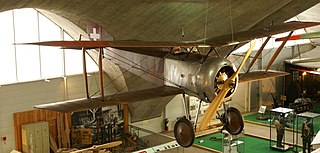
The Hanriot HD.1 was a French World War I single-seat fighter aircraft. Rejected for service with French squadrons in favour of the SPAD S.VII, the type was supplied to the Belgian Army′s Aviation Militaire Belge and the Royal Italian Army′s Corpo Aeronautico Militare, with both of which it proved highly successful. Of a total of about 1,200 examples built, 831 were produced by Italian companies under licence.
The Hanriot HD.6 was a French two-seat fighter aircraft prototype, built towards the end of World War I though not flown until after the armistice with Germany. A biplane with an unusually narrow gap between upper and lower wings, powered by a single water-cooled radial engine, it did not enter production.

The Nieuport Nie 31 or Nieuport 31 was a single-engine, single-seat monoplane or sesquiplane fighter aircraft designed and built in France in 1919.

The Kondor D 6 was a prototype German biplane fighter aircraft flown in 1918. In the interests of better upward vision for the pilot, its upper wing was in two halves, separated over the central fuselage. Its development was soon abandoned.
The Pfalz D.VI was a German sesquiplane fighter aircraft from World War I. It was not put into production.

The Letov Š-3 was a single-seat, single-engine parasol wing fighter aircraft designed and built in Czechoslovakia in the early 1920s. Only one was completed and flown, its makers preferring to develop a biplane fighter.
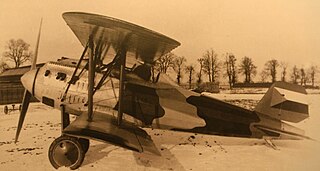
The Letov Š-7 was a single-seat, single-engine biplane fighter aircraft designed and built in Czechoslovakia in the early 1920s. It was designed for a single-seat fighter competition but did not reach production.
The Letov Š-13 was a single-seat, single-engine fighter aircraft designed and built in Czechoslovakia in the early 1920s. A biplane, it had aerodynamically thick wings which were originally cantilever structures, though interplane struts were later added. Only one was produced.
The Hanriot HD.5 was a French two-seat fighter aircraft prototype, built towards the end of World War I. A single-engine biplane with an unusually narrow gap between the upper and lower wings, it did not enter production.

The Hanriot HD.15 was a French two seat fighter aircraft fitted with a supercharger for good high altitude performance, built in the 1920s. Three were ordered by Japan but lost at sea during delivery.
The Hanriot HD.20 was a French single seat shipboard fighter aircraft prototype completed in 1923. Only one was built.

The Hanriot H.26 was a French single seat fighter aircraft prototype completed in 1923. Only one was built.
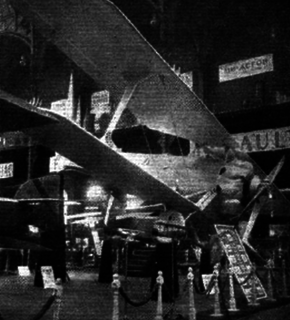
The Hanriot H.31 was a single engine, single seat French biplane fighter aircraft built in 1925 to compete in a government programme. It was not successful and only one prototype was completed.
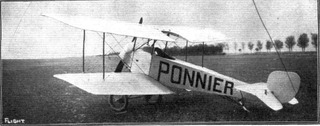
The Ponnier L.1 was an early French biplane single seat scout, built just before World War I. It did not reach production.

The Ponnier D.III was a French monoplane racing aircraft, designed to compete in the 1913 Gordon Bennett Trophy race. It finished a close second.

The LFG Roland D.IV, later redesignated LFG Roland Dr.I was a German single engine, single seat triplane fighter flown in mid-1917. It produced no performance or operational advantages over existing types and only one was built.

The LFG Roland D.XV was a World War I German single seat fighter aircraft, ordered as a test-bed for engine comparisons. It was distinguished from earlier Roland biplane designs by the elimination of flying wires. Two later aircraft, also called LFG Roland D.XV, were completely different designs with slab sided fuselages.
The Caudron C.37 was a French three-engined biplane passenger transport, built in 1920. It could carry six passengers.
The Caudron 02 was a French high altitude single seat fighter that was flown in November 1917.
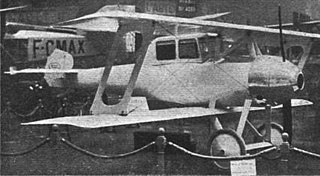
The de Marçay Limousine was a two-seat French touring biplane introduced at the 1919 Paris Aero Salon. A smaller but otherwise very similar single-seater was also there.